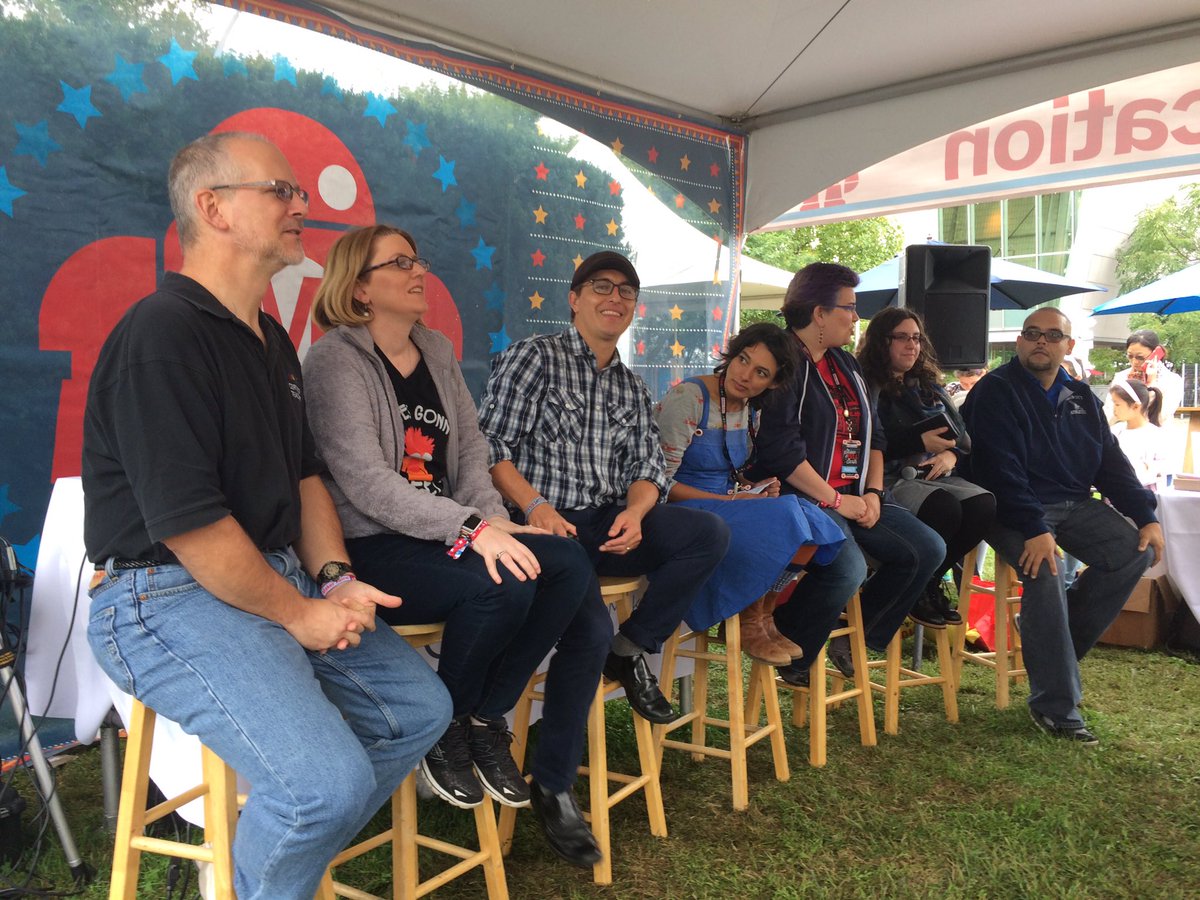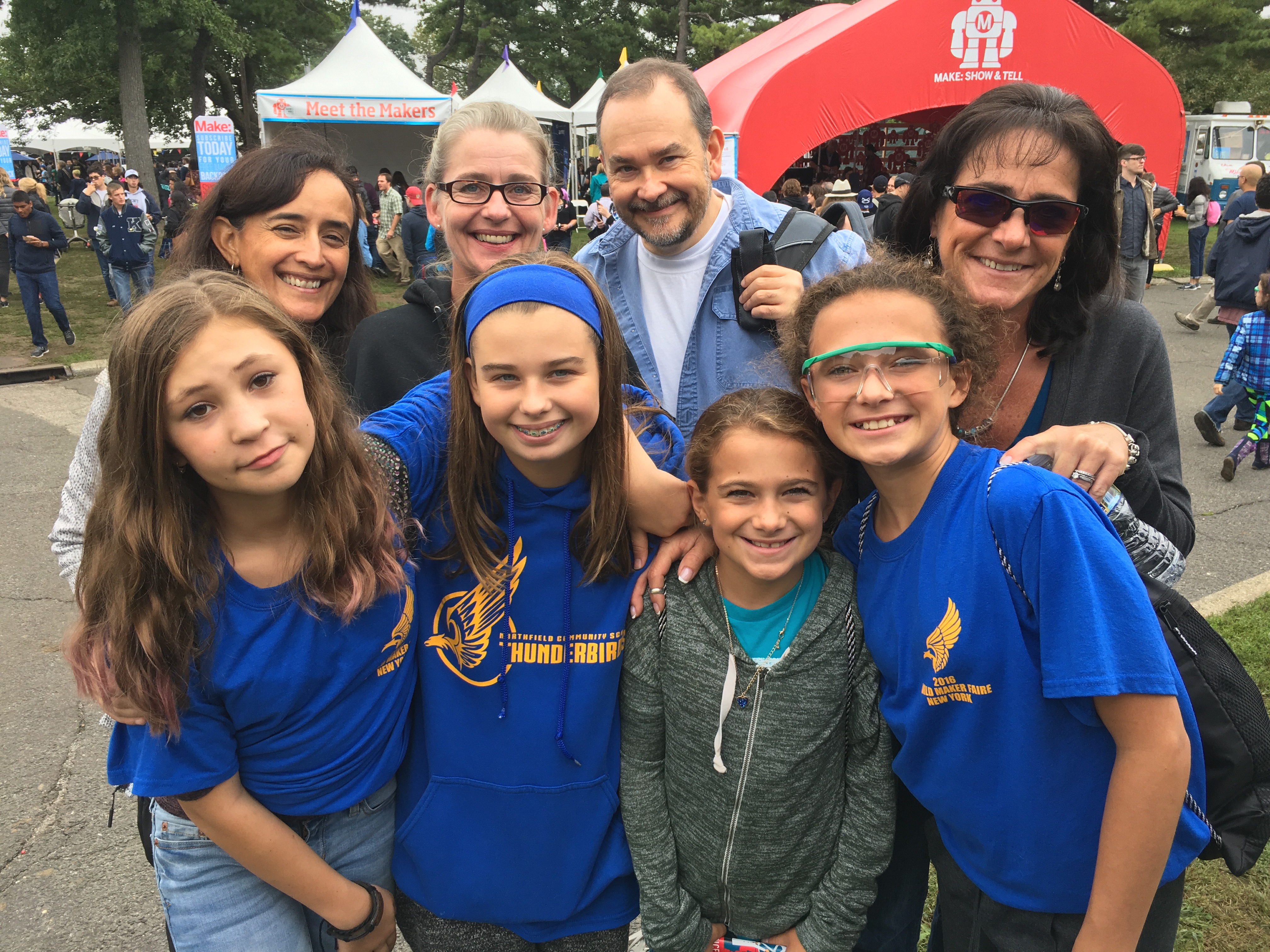World Maker Faire took place on Oct. 1-2 at the New York Hall of Science. We were lucky enough to have to opportunity to organize some amazing presentations at the Education Stage. We hope that you were able to make it! We’ve asked a few of our panelists and guests to recap the festivities for those who weren’t able to be there.
By: Kevin Jarrett
My name is Kevin Jarrett. I teach design to middle school students in a makerspace/fablab we call “Digital Shop.” This is my 13th year in education, but my second in middle school. Previously, I taught elementary students about technology, in what most people know of as a “Computer Lab,” but with an engineering focus.

I was fortunate to have two panel experiences at Maker Faire NYC. For the first, shown above, I was happy and humbled to join the fun with Elissa Malesepina, Gene Osborn, Christa Flores, Meredith Martin, Jackie Gerstein, and Marcos Navas. For the second panel, I was happy to be able to bring a group of students to the Education Stage to share their experiences (only some of whom are shown here):

The Education Stage was packed—standing room only—the ENTIRE day, a testament to the lineup of speakers arranged by Maker Ed as well as attendee interest in education overall, which was truly fantastic to see. Educators and students usually spend most of their time talking with each other, so, getting to speak with the general public (including, admittedly, a few educators) was important because we got to share our enthusiasm, ideas and opinions with a wider audience.
I enjoyed being able to share my experience building and leading the “Technology, Engineering & Design” program we have at my school. Each time a question was asked, I was pleased to hear my colleagues saying almost exactly the same things I had in my head, indicating they we share more than just a friendship—we share mindsets, too.
That said, there was one thing we all missed. A question was asked about assessments and the value of making, in terms of documented impacts on learning. Our responses were perfectly fine, but, I wished we’d drawn attention to the fact that the subject is currently being scrutinized with great intensity by the research community. Wonderful examples include Agency by Design’s Framing a Value-based Approach to Documentation and Assessment for Maker-Centered Learning and Maker Ed’s Open Portfolio Project. These research projects are critically important for the maker movement to gain “respectability” in the high-stakes testing environment we live in. Essentially, we need to be able to document what we see and know is happening—that kids are learning in powerful and important ways.

The second panel I was on featured a lively presentation by seven of our middle school students about their experience in my program, and specifically, the makerspace/fablab we built ourselves, called Digital Shop. (You can see photos of our kids in action here.) Kids related how they took charge of their own learning on meaningful projects that our community needed—not just “making something” for the sake of the making itself. Sure, there was plenty of enthusiasm for the technologies we’ve got—multiple 3D printers, littleBits modules, programmable drones, more. But what really was impressive, in my view at least, was the way our program’s human-centered focus played out in each of their talks. Every kid spoke in some way about how their work helped other people, how teamwork mattered, how they felt they’d made a difference in the world. That, to me, is the central theme of our program, and Maker Faire, too—that kids see themselves as designers of their own worlds—with the power to change it as they see fit.
Thank you, Maker Ed, for giving our students’ work a wider audience!
For more information about Kevin, visit his blog.
Photos courtesy of Kevin Jarrett.
